ABC Company E-Learning Management System Capstone Project Document
Introduction
E-Learning solutions are existing everywhere through the help of internet which makes the users to have free access of information in just one click. These are all affordable solutions that is facilitated to be a tool for education. (“Talent LMS,” n.d.)
A virtual technology that makes an advancement to the geographical gap, which the users experience that they are being inside of a classroom. E-learning solutions, offers the ability in sharing material to all kinds of formats. Such as videos, slideshows, word documents, and PDFs. Conducting webinars- a live online classes that enables the communication between professors and students through chat and video messaging. (“Talent LMS,” n.d.)
There are different e-learning systems (otherwise known as Learning Management Systems, or LMSs for short) and methods, which allows for courses to be delivered. With the right tool, various processes can be automated such as a course with set materials and automatically marked tests. E-learning is an affordable (and oen free) solution which provides the learners with the ability to fit learning around their lifestyles, effectively allowing even the busiest person to further a career and gain new qualifications.
Some of the most important developments in education happened since the launch of the internet. These days learners are well versed in the use of smartphones, text messaging and using the internet that has become a simple affair in participating and running an online course. Message boards, social media and various other means of online communication allows learners to keep in touch and discuss course-related matters, while providing a sense of community. (“Talent LMS,” n.d.)
Background of the study
The students and teachers in every department of ABC Companyhad their own skills and potential on how they manage their lessons and activities in school, both had their own time, work and effort to spent for them to meet the requirements of the school and how they deal the difficulties of their own work. But with the help of technology, all schoolworks can be done fast and easily. The teachers are now using powerpoint to present their lessons and activities, they are using excel to manage their student’s attendance and grades and to evaluate their performance. The students are now using word and powerpoint to do their assignments, projects and reports. The role of technology gave impact and change into our life as it continues to develop more advanced and it affects the learning system of the school.
The Department of Information Systems is a part of the organizations of ABC Companywherein the teachers and the students involved had more knowledge and influence when it comes to computer sowares, the students involved are taking up the course of Bachelor of Science of Information Systems. They had improvements on how they manage their learning system especially through giving out quizzes and examinations using the computer and through the use of LMS soware. LMS stands for Learning Management System, it is a soware application for the administration, documentation, tracking, reporting and delivery of educational courses, training programs, or learning and development programs. According to Musbah and Muhammad (2013), Learning Management Systems are web-based classrooms and E-learning is rapidly evolving with the use of Learning Management Systems. This system enables teachers and students to have access to course activities, projects, assignments and quizzes. E-learning offers the ability to share material in all kinds of formats such as videos, slideshows, word documents, and PDFs. Since, the BSIS students were well trained and oriented by using the LMS soware, we have decided to develop an LMS soware that is exclusive to all the teachers and students of ABC COMPANY -Fortune Towne. But for the mean time we will develop this system only for the IS department of ABC Companyuntil it becomes successful and will serve as a powerful e-learning tool of ABC Companyin the future.
Statement of the Objective
The coverage of this study is to identify the following objectives of the project.
1. To develop an E-Learning management system for ABC Companywhich is be capable of the following:
• Manage learning more effectively
• Improve compliance reporting
• Combine social and formal learning for an increased overall value
• Monitor students attendance and academic kperformance
• Improve content delivery
2. Evaluate the acceptability of the system using the adopted survey instrument based on Lewis, J. R. (1995) Computer System Usability and Davis, F. D. (1989) Perceived Usefulness and Ease of Use.
Conceptual Framework
The coverage of this study is to provide a basic structure of the ABC CompanyE-Learning Management System. This conceptual framework shows the work flow of the system
Scope and Limitation of the Study
The main focus of this study is to identify the scope and delimitation of the project. ABC CompanyE-Learning Management System will serve as an educational system that redefines it for classroom use.
Scope
The coverage of this study is to develop the ABC CompanyE-learning Management System to be used as an classroom aid wherein the teachers and students will be capable of managing learning more effectively wherein learning activities are housed in one location and thus reduce costs while also creating greater visibility for learning opportunities. Improve compliance reporting wherein learning management systems can track the courses students take and the scores they receive, allowing to identify needs. Combine social and formal learning for an increased overall value wherein learning retention is accelerated through the integration of an online method of study and allows students to go at their own pace. Monitor students performance wherein. Improve content delivery wherein faculty can more easily prepare and present quality courses that will act as positive learning opportunities for students.
Delimitation
The ABC CompanyE-Learning Management System is limited only to the IS Department that involves the students and the teachers of the said department. The IS faculty only will have the authority to manage their class activities. The file format when adding lesson files is limited only to document, presentation, spreadsheet, PDF and image except video. The system cannot operate the time limit that is intended to function when taking a quiz for the mean time.
Significance of the Study
This study will give significance and importance of ABC CompanyE-learning Management System that enables students and teachers of ABC COMPANY to reach one another and connect them by sharing ideas and lessons through the intranet or even internet.
Institution
This study will help the institution to empower the education and to embrace the process of e-learning.
Faculty
This study will help the faculty to manage their classroom activities by creating training courses, sharing of lesson files and checking of students attendance.
Students
This study will help the students to easily access the training courses and learning materials.
Researchers
This study will help the researchers increased their learning experience by using their knowledge and skills to develop the system.
Definition of Terms
This study contains terms that are defined conceptually and operationally:
E-learning
Conceptually, E-learning is an education via the Internet, network, or standalone computer. (Beal, n.d.)
Operationally, E-learning offers the ability to share material in all kinds of formats such as videos, slideshows, word documents, and PDFs.
Internet
Conceptually, Internet is a worldwide system of transmission channels ethat renavles machines connected to them to communicate with another regardless of their particular configuration. (Hayslett, Michele, 2005)
Operationally, Internet is a globally connected network system that uses TCP/IP to transmit data via various types of media. The internet is a network of global exchanges – including private, public, business, academic and government networks – connected by guided, wireless and fiber-optic technologies.
Learning Management System
Conceptually, Learning Management System refers to the soware-based platform that provides infrastructure, framework and tools to facilitate online learning or training (Litmos, 2015).
Operationally, Learning management system (LMS) is a soware application for the administration, documentation, tracking, reporting and delivery of educational courses, training programs, or learning and development programs.
PDF (Portable Document Format)
Conceptually, PDF as the name Portable Document Format implies, was developed by Adobe Systems as a means for digital file exchange. The main idea behind the file format is to enable all computer users to be able to open, review, and print the documents saved in it. This means that users who work on computers that don’t have the soware with which the files were originally created can still see the document as it was originally designed and laid out, including all its fonts and graphics. (Greg Harvey, n.d.)
Operationally, PDF refers to a file format that has captured all the elements of a printed document as an electronic image that you can view, navigate, print, or forward to someone else.
Webinar
Conceptually, Webinar creates opportunities for both educators and learners to experience different levels of interaction online, and these opportunities are essentially different from other communication approaches such as discussion-board postings and e-mails. (Wang & Hsu, n.d.)
Operationally, Webinar is a short term for web-based seminar, a webinar is a presentation, lecture, workshop or seminar that is transmitted over the web using video conferencing software.
Review Of Related Literature
Local Studies
ABC Company BSIS Online Learning Management System
The ABC Company BSIS Online Learning Management System is an online web-based system that supports educational decision making activities and can be accessed anywhere. The system will serve as the platform for BSIS program where students can upload downloadable files uploaded by the teachers. It allows teachers to keep track of students records. It allows students to view announcements posted by the teachers in a class; take quiz; student request to enroll for the subject; They can can interact with each other through messaging. The system is dynamic where the administrator could update the information of the teachers and students of the said program and its authorized users. (Ebacuado et. Al.,2013)
STI Electronic Learning Management System (eLMS)
The STI Electronic Learning Management System (eLMS) is an interactive educational app, engaging social networking platform, and personal organizer. You can review, study ahead, and catch up on your assignments anytime and anywhere. You can’t miss your class modules, handouts, and assignments. You can enroll in extra-curricular courses to learn something new. You can challenge yourself by taking interactive quizzes. Practice it until you have mastered the concepts and theories in your subjects. Complete as many courses as you want and be inspired by your progress. You can keep your notes, slides, and other helpful links and resources on your virtual locker. Be updated with the latest events and important dates in your school. You can send a message and discuss with your teachers and collaborate with your classmates. (“STI College” n.d.)
E-Learning Management System with Screen Share Technology
E-Learning Management System with Screen Share Technology is intended to provide for the Thompson Christian School to cater the needs of the students by providing the course materials, taking of examination/quizzes online and by providing screen share during discussions. The E-Learning will be working with the Screen Share during class hours. The E-Learning Management System with Screen Share Technology ensures quality education for the students and for quality teaching of the teachers. Modules are given and are very useful for the students and of the teachers. (Dumanig et. Al,. 2013)
Foreign Related Studies
Edmodo
Edmodo combines a secure social network platform with the functionalities of a learning management system (LMS). The site, founded by Nic Borg and Jeff O’Hara, allows teachers and students to collaborate on assignments, share resources, and start discussions. Teachers can also privately share their learning resources with colleagues in their internal network. An interesting feature called insights measures the mood of the classroom based on positive or negative reaction responses by students working in Edmodo. Teachers also have access to a library that includes learning apps such as LearnZillion and Subtext which can be used within the platform. (“Edmodo,” n.d.)
NEO LMS
NEO LMS enables users to offer a range of class types, such as self-paced, instructor-led, or blended courses. Content in a variety of formats can be uploaded and embedded into courses, including audio and video files, Google Docs, Office documents, OneDrive files, and more. US common core standards are preloaded, but users can also create their own competencies, align course content and assessments with specific competencies, and view how well a class aligns with the competencies through coverage analysis. Classes can be displayed to students in a graphical catalog, and users can offer courses for purchase via integration with payment gateways including PayPal, Authorize.net, PayU biz and Stripe. NEO LMS offers a range of assignment types for student assessment, including quizzes, debates, essays, and discussions. Quizzes can be created by selecting questions from the built-in question bank, with seven different question types available. Timed quizzes are supported, and results and feedback are gives to students instantly. Students can collaborate in NEO through chat, forums, groups blogs and wikis, with the option to use these tools within a class, or in a group spanning multiple classes. Social networking features, including chat, are also included. (“NEO LMS” n.d.)
Talent LMS
TalentLMS is a highly configurable cloud-hosted learning management system created to help users simplify how they facilitate online seminars, courses, and other training programs.
This soware offers robust course creation tools that can adapt to the different requirements of your eLearning program. What sets this system apart from its competitors, however, is that it is also equipped with conferencing features and gamification capabilities to foster more engaging learning environments for your employees, customers, or students. (“TalentLMS” n.d.)
Related Systems
The coverage of this study provides a comparison table of the related systems of ABC CompanyE-learning Management System based from its local and foreign related studies. The comparison table provided below shows the following features of the system that is being compared to its related systems based on the local and foreign related studies.
Synthesis
The coverage of this study provides a summary over view of the related studies and literature of the ABC CompanyE-learning Management System. The local and foreign related studies that has been discussed are all related to the proposed system that has been analyzed and evaluated based on the related systems which is a basis for the comparison table. The local studies are studies or investigations already completed in the local country to which the present study is related. The local studies of ABC CompanyE-Learning Management System are the ABC CompanyBSIS Online Learning Management System, STI Electronic Learning Management System (eLMS) and E-Learning Management System with Screen Share Technology. The foreign studies concerns the comprehensive research of literature of other countries. The foreign studies of the system are Edmodo, NEO LMS and Talent LMS. The comparison table provided in the related systems is a tool that is used in order to identify and compare the different features of the system that needs to be applied and developed. The result of the study have concluded that the related systems had different features that is needed to be applied to the system in order to be accurate which is expected to have.
Methodology
In this chapter we used a developmental research approach that serves as our research design for this study.
This model allows users to interact and experiment with a working model of the system known as the prototype. At any stage, if the user is not satisfied with the prototype, it can be discarded and an entirely new system can be developed. Generally, prototype can be prepared through the approaches by creating main user interfaces without any substantial coding so that users can get a feel of how the actual system will appear, by abbreviating a version of the system that will perform limited subsets of functions and by using system components to illustrate the functions that will be included in the system to be developed. (Rohit, 2010).
Requirement Gathering
A prototyping model begins with requirement analysis and the requirements of the system are defined in detail. In this phase, we gather sources of information to identify the scope and objectives for the ideal of the system and we did a comparison of its related systems so we could determine the requirements of the system and comply its features.
When requirements are known, a preliminary design or quick design for the system is created. It is not a detailed design and includes only the important aspects of the system, which gives an idea of the system to the user. A quick design helps in developing the prototype. In this phase, we use the prototyping model as our soware model design for the system.
Building Prototype
Information gathered from quick design is modified to form the first prototype, which represents the working model of the required system. The developer analyzes the exact requirements based on the ERD diagram, Data flow diagram and Acrhitectural diagram that is modified to form a prototype. It represents a rough design of the required system. In this phase, the system is being developed by creating the database using xampp and then by creating the codes using sublime.
User Evaluation
The proposed system is presented to the user for thorough evaluation of the prototype, which represents the working model of the required system. In this phase, the proposed system is presented to the IS faculty and students by conducting an adopted survey instrument based on Computer Usability and Perceived Usefulness and Ease of Use to evaluate the acceptability of the system.
Refining Prototype
If the user is not satisfied, the current prototype is refined according to the new requirements. A new prototype is developed with additional information provided by the user. The new prototype is evaluated just like the previous prototype. This process continues until all the requirements specified by the user are met. Once the user is satisfied with the developed prototype, a final system is developed on the basis of the final prototype.
Engineer Product
Once the requirements are completely met, the user accepts the final prototype. The final system is evaluated throroughly followed by the routine maintenance on regular basis for preventing large-scale failures and minimizing downtime.
Operational Feasibility
Operational feasibility is the measure of how well a proposed system solves the problems, and takes advantage of the opportunities identified during scope definition and how it satisfies the requirements identified in the requirements analysis phase of system development. It helps in taking advantage of the opportunities and fulfills the requirements as identified during the development of the project. This study aims to develop the following functionalities of ABC CompanyE-Learning Management:
- The system can be used as a classroom aid wherein the teachers can manage their classroom activities
- The system can create training courses
- The system can share lesson files
- The system can check the attendance of the students
Front End
Front end is the presentation layer that is directly accessed and interacted by the user to receive or utilize back-end capabilities of the system. PHP serves as scripting language and a tool for making dynamic and interactive Web Pages. HTML Proponents used HTML for Standard formatting system for publishing document on the world wide web. A non profitary format based on standard genralize mark up language and can be created and processed by a wide range of tools.
CSS Proponents used cascading Stylesheet for interactive design and the interface of the system. Allows designers to attach style, example fonts, colors and spacing. Java Script used for cripting language concentrated on clients side form validation and working with images on web pages to provide rudimentary, although helpful, interactively and feedback to the visitor. (Pryterch, 2016)
Back End
Back end is the data access layer that is not directly accessed by the user. My SQL Open source relational database management system that uses structured query language and also capable of replicating data and partitioning cable for better performance and durability.
Technical Feasibility
Hardware Specification
- Processor: Intel Celeron N3450 Quad-core.
- Memory: 4GB DDR3L.
- Storage: 500GB HDD.
- Optical Drive: Multi Tray-in Type.
- Operating System: Windows 10 Home Value
Software Specification
- Google Chrome 78.0.3904.87
- Firefox 70
- Internet Explorer 11
- Windows 10 version 1903
Implementation
Hardware Implementation
| Name | Minimum | Recommended |
| Processor | Celeron | Core i-3 |
| RAM | 1GB | 2GB |
Software Implementation
| Name | Minimum | Recommended |
| Operating System | Windows XP | Windows 8 |
| Web Browser | Mozilla Firefox | Google Chrome |
Architechural Diagram
Feasibility Schedule
Gantt Chart
A gantt chart is commonly used in project management. It is one of the most popular and useful ways of showing activities displayed against time. On the le of the chart is a list of the activities and along the top is a suitable time scale. Each activity is represented by a bar; the position and length of the bar reflects the start date, duration and end date of the activity.
Work Breakdown
Cost Benefit Analysis
This table shows the development and operational cost of the system.
Table 2.0 Cost Benefit Analysis
| COST BENEFIT ANALYSIS (Current) | |||||
| Development Cost | Quantity | Unit | No. of Months | Cost | Total Amount |
| Computers | 2 | 1 | N/A | ₱ 13,546.00 | ₱ 27,092.00 |
| Programmer | 1 | N/A | ₱ 10,000.00 | ₱ 10,000.00 | |
| ₱ – | |||||
| ₱ – | |||||
| Subtotal | ₱ 37,092.00 | ||||
| Operational Cost | Quantity | Unit | No. of Months | Cost | Total Amount |
| Electricity | 1 | 10 | ₱ 1,000.00 | ₱ 10,000.00 | |
| Internet connection | 1 | 12 | ₱ 1,999.00 | ₱ 23,988.00 | |
| Maintenance | 1 | N/A | ₱ 1,000.00 | ₱ 1,000.00 | |
| ₱ – | |||||
| ₱ – | |||||
| ₱ – | |||||
| ₱ – | |||||
| ₱ – | |||||
| ₱ – | |||||
| ₱ – | |||||
| Subtotal | ₱ 34,988.00 | ||||
| TOTAL COST | ₱ 72,080.00 | ||||
Benefits of the System (Annually) Amount/Value
Table 3.0 Benefits of the System
This table shows the benefit of the system.
| Benefit | Quantity | Unit | No. of Months | Cost | Total Amount |
| Time & cost effectiveness | 1 | 12 | ₱ 6,500.00 | ₱ 78,000.00 | |
| ₱ – | |||||
| ₱ – | |||||
| ₱ – | |||||
| TOTAL BENEFIT | ₱ 78,000.00 | ||||
The table below shows the return of investments on the clients side. The table shows the investments that will not take more than 1 year to gain from the operational and developmental cost of clients in a year.
ERD Model
Data Flow Diagram
Data Dictionary
| Field Name | Data Type | Field Length | Constraint | Description |
| ID | tinyint | 11 | Primary key | Unique identifier for user table |
| User name | Varchar | 100 | User name of the user | |
| First name | Varchar | 150 | First name of the user | |
| Last name | Varchar | 150 | Last name of the user | |
| Password | Varchar | 100 | Password of the user | |
| Role | Varchar | 2 | Role of the user | |
| Course | Varchar | 10 | Foreign key | Course of the user |
Table 4.1 Announcement
| Field Name | Data Type | Field Length | Constraint | Description |
| ID | Int | 11 | Primary key | Unique identifier for announcement |
| Content | Text | 100 | Content of announcement | |
| Sender ID | Int | 11 | Foreign key | Sender of announcement |
| Reciever type | Varchar | 10 | Reciever type | |
| Reciever ID | Int | 11 | Foreign key | Reciever of announcement |
| Date | Date | Date of announcement |
| Field Name | Data Type | Field Length | Constraint | Description |
| ID | Int | 11 | Primary key | Unique identifier for subject |
| Code | Varchar | 20 | Code of subject | |
| Name | Text | Name of subject |
| Field Name | Data Type | Field Length | Constraint | Description |
| ID | Int | 11 | Primary key | Unique identifier for class |
| Subject ID | Int | 11 | Foreign key | Subject of class |
| Code | Varchar | 30 | Code of class | |
| Description | Text | Description of class | ||
| Password | Varchar | 10 | Password of class | |
| Teacher ID | Int | 11 | Foreign key | Teacher of class |
| School year ID | Int | 11 | Foreign key | School year of class |
| Field Name | Data Type | Field Length | Constraint | Description |
| ID | Int | 11 | Primary key | Unique identifier for school year |
| Year | Varchar | 4 | Year of school year | |
| Semester | Varchar | 20 | Semester of school year |
| Field Name | Data Type | Field Length | Constraint | Description |
| ID | Int | 11 | Primary key | Unique identifier for attendance |
| Class ID | Int | 11 | Foreign key | Class information |
| Student ID | Int | 11 | Student information | |
| Status | Varchar | 10 | Student Status | |
| Date | Date | Date of Attendance |
| Field Name | Data Type | Field Length | Constraint | Description |
| ID | Int | 11 | Primary key | Unique identifier for document |
| Class ID | Int | 11 | Foreign key | Class information |
| File | Varchar | 100 | File of document | |
| Description | Text | Description of document | ||
| Type | Varchar | 2 | Type of document |
Presentation, Analysis, And Presentation Of Data
Presentation
The researchers introduce the system and demonstrates on how to use the system to the selected respondents which is the IS faculty and students. The respondents evaluated the acceptability of the system using an adopted survey instrument based on Computer Usability which is provided for the students and Percieved Usefulness and Ease of Use which is provided for the teachers.
Data Analysis
The researchers analyze the data gathered from the respondents by encoding the answers based on the rating scale provided in the questionnaire and by solving its mean and standard deviation to interpret the results of the survey.
Characteristics of the Respondents
The researchers use purposive sampling to select the number of respondents. Purposive sampling is a method of non-probability sampling. It is an outstanding tool for research in phenomenology. Purposive sampling is desirable in any of a number of forms.
In purposive sampling, the researcher selects sampling units based on his or her judgement of what units would facilitate an investigation. All through purposive sampling the elements are chosen for a precise purpose generally due to the unique placements of the trial elements. The purposive sampling may engross studying the entire population of a number of limited groups or a division of a given populace (Ray, 2012).
The characteristics of the respondents are the teachers and students of the IS Department. The number of student respondents is forty while the number of teacher respondents is three.
Table 6. Respondents and Frequency
| Respondents | Frequency | Percentage |
| Faculty | 3 | 7% |
| Students | 40 | 93% |
| Total | 43 | 100% |
Interpretation of Data
The system will be evaluated using the adopted survey instrument based on Computer System Usability for the students, Perceived usefulness and Perceived ease of use for the teachers. The level of scale provided indicates the following: 4 – Strongly Agree, 3 – Agree, 2 – Disagree, 1 – Strongly Disagree.
Table 7. Mean Distribution on Computer System Usability
| Criteria | Mean | Std. Deviation | Verbal Interpretation |
| Question 1 | 3.5 | 0.184210526 | Agree |
| Question 2 | 3.525 | 0.185526316 | Agree |
| Question 3 | 3.375 | 0.177631579 | Agree |
| Question 4 | 3.45 | 0.181578947 | Agree |
| Question 5 | 3.4 | 0.178947368 | Agree |
| Question 6 | 3.5 | 0.184210526 | Agree |
| Question 7 | 3.55 | 0.186842105 | Agree |
| Question 8 | 3.3 | 0.173684211 | Agree |
| Question 9 | 3.375 | 0.177631579 | Agree |
| Question 10 | 3.375 | 0.177631579 | Agree |
| Question 11 | 3.55 | 0.186842105 | Agree |
| Question 12 | 3.5 | 0.184210526 | Agree |
| Question 13 | 3.5 | 0.184210526 | Agree |
| Question 14 | 3.55 | 0.186842105 | Agree |
| Question 15 | 3.375 | 0.177631579 | Agree |
| Question 16 | 3.375 | 0.177631579 | Agree |
| Question 17 | 3.55 | 0.186842105 | Agree |
| Question 18 | 3.6 | 0.189473684 | Agree |
| Question 19 | 3.525 | 0.185526316 | Agree |
| Total | 65.875 | 3.467105263 | Agree |
Table 7. Mean Distribution on Percieved Usefulness
| Criteria | Mean | Std. Deviation | Verbal Interpretation |
| Question 1 | 3.333 | 0.175421053 | Agree |
| Question 2 | 3.3333 | 0.175436842 | Agree |
| Question 3 | 3.333 | 0.175421053 | Agree |
| Question 4 | 3.667 | 0.193 | Agree |
| Question 5 | 3 | 0.157894737 | Agree |
| Question 6 | 3.667 | 0.193 | Agree |
| Total | 20.3333 | 3.88883333 | Agree |
Table 7. Mean Distribution on Percieved Ease of Use
| Criteria | Mean | Std. Deviation | Verbal Interpretation |
| Question 1 | 3.333 | 0.5555 | Agree |
| Question 2 | 3.667 | 0.611166667 | Agree |
| Question 3 | 3 | 0.5 | Agree |
| Question 4 | 3.333 | 0.5555 | Agree |
| Question 5 | 3.333 | 0.5555 | Agree |
| Question 6 | 3.667 | 0.611166667 | Agree |
| Total | 20.333 | 3.388833333 | Agree |
Summary Of Findings, Conclusion And Recommendation
Summary of Findings
The ABC CompanyE-Learning Management System will serve as a classroom aid intended for the use of IS students and faculty that is capable of managing learning more effectively, Improve compliance reporting, combine social and formal learning for an increased overall value, monitor students attendance and academic performance and improve content delivery.
Conclusion
The ABC CompanyE-learning Management System had been proven acceptable for the IS Department based from the results that interprets to be strongly agree. Since the IS Department are already familiar about LMS or ELMS and already experienced using LMS sowares like Edmodo and Neo LMS which is very efficient to use when it comes to managing classroom activities, that’s why the researchers decided to develop this kind of system which is made exclusively for the teachers and students of ABC Companythat will serve as a powerful e-learning tool of the institution.
Recommendations
The researchers concluded that the system was able to perform the features that has been stated on the scope and objectives. The system is effective in delivering the content and function to the users. The teachers can create a class, add subject, check attendance of the students, upload lesson files and create training courses. The students can enroll the class subject by entering the class code given by the teacher in order to access the learning materials, download lesson files, take the quiz and upload assignments and projects. For the future researchers, we recommend to configure all of the features that an e-learning system possess and add real-time notification and SMS notification. The scope of the system should not limit only for the IS Department but for all of the departments of ABC Company in order to adopt a new innovative education.
Credits
Caspe, Kim Rhod Mark, A.
Ciocon, Jetro, A.
Dolido, Angela Marie, D.
Panes, Jiezel, L.

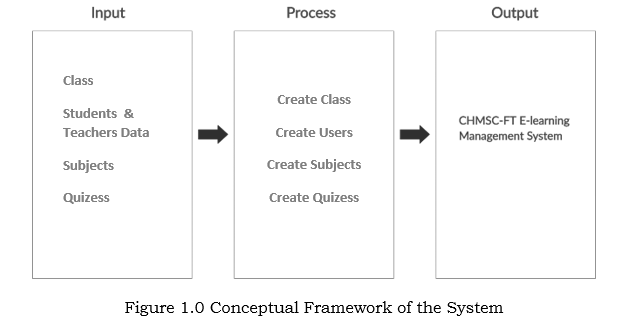

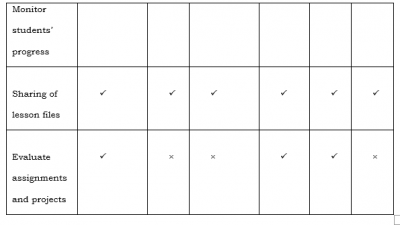
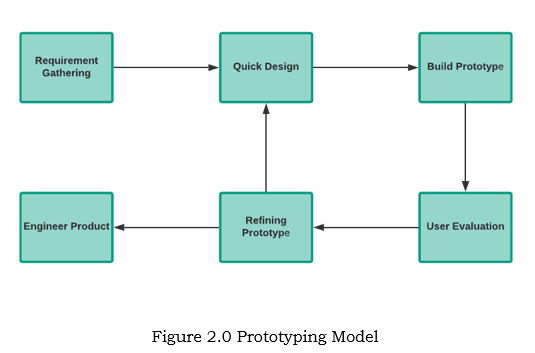
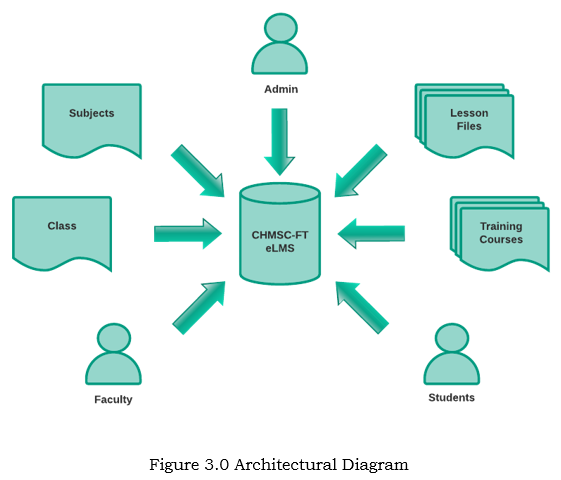
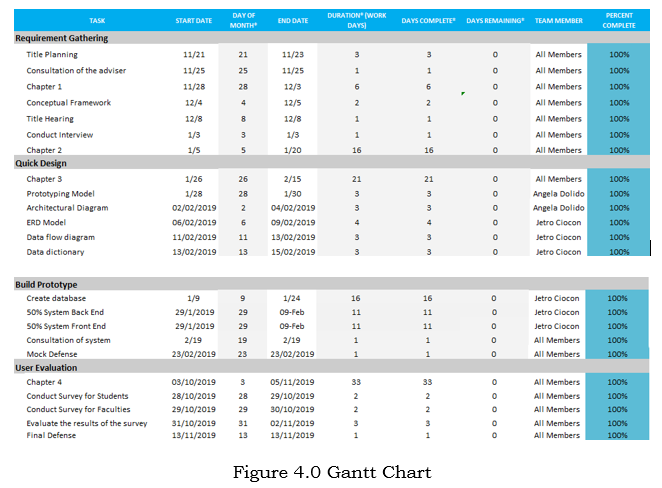

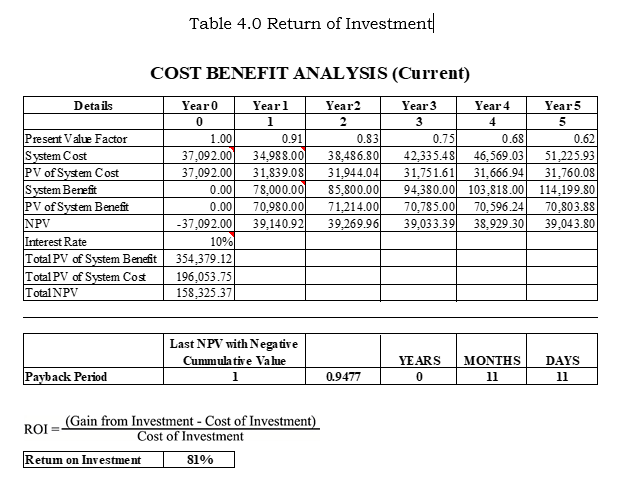
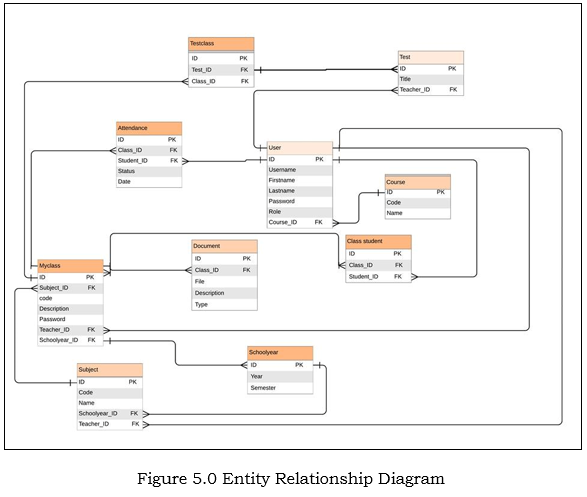
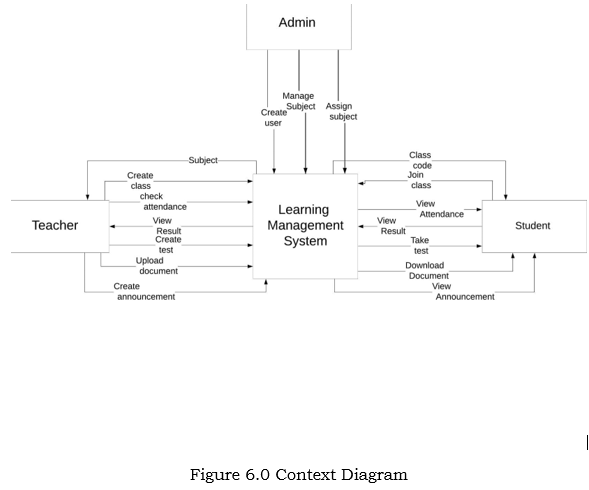
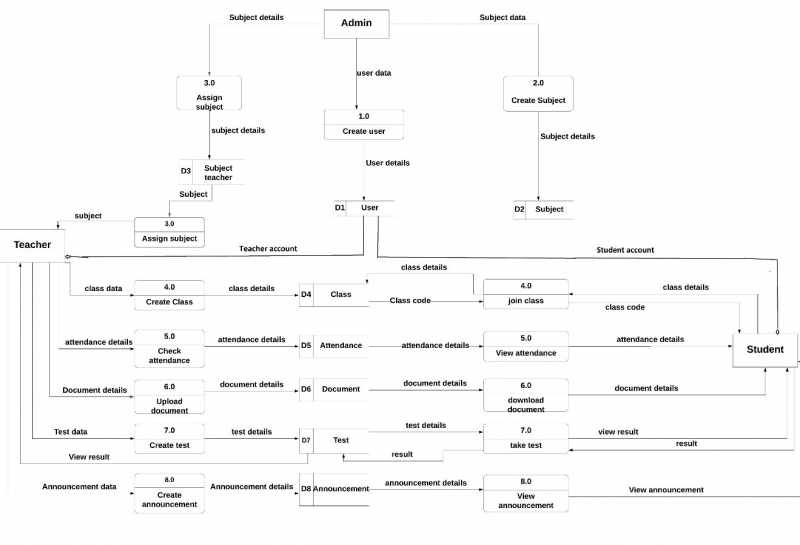
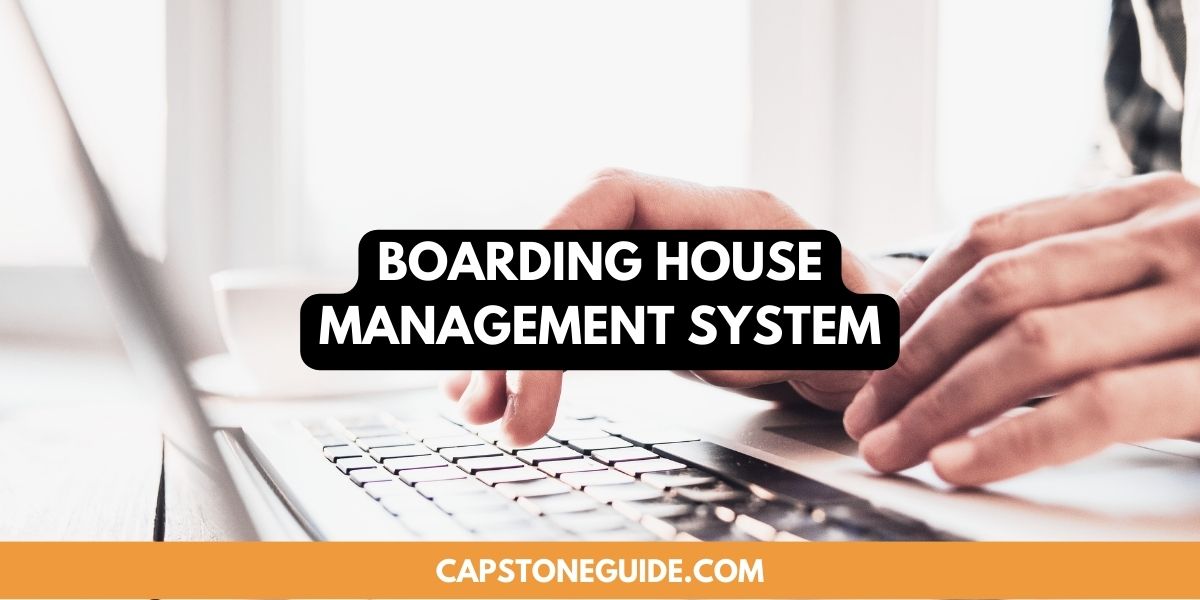

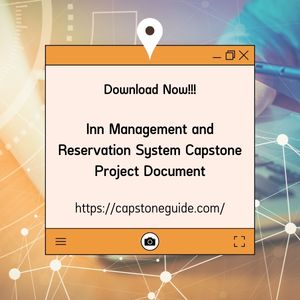
Leave A Comment
You must be logged in to post a comment.